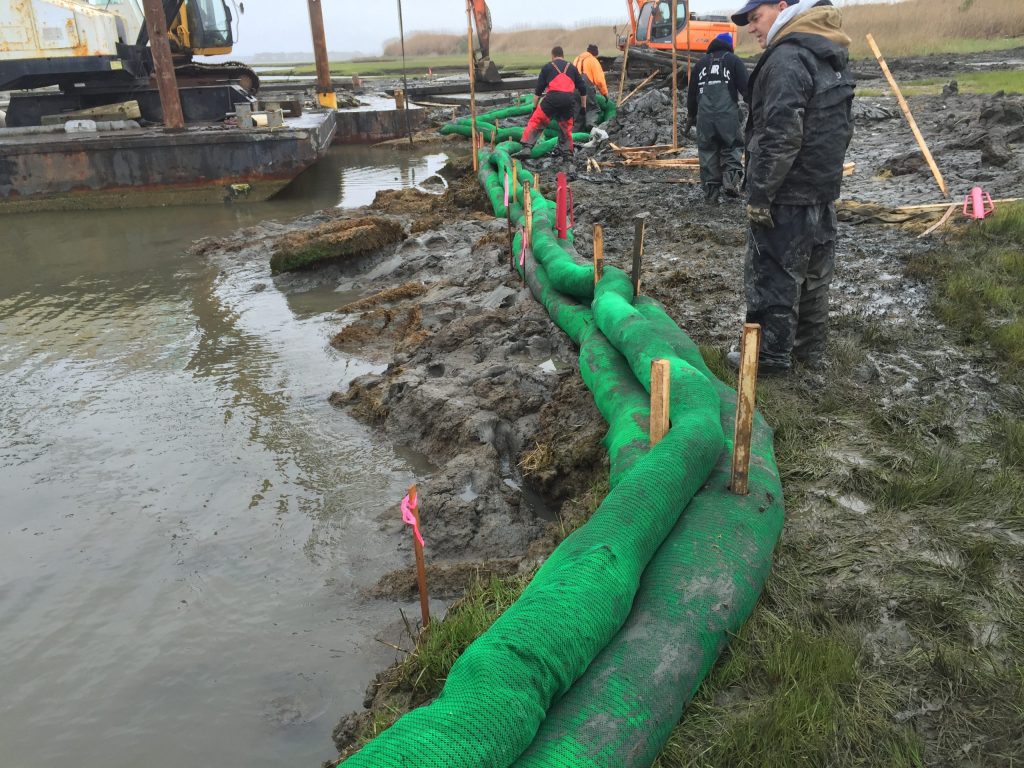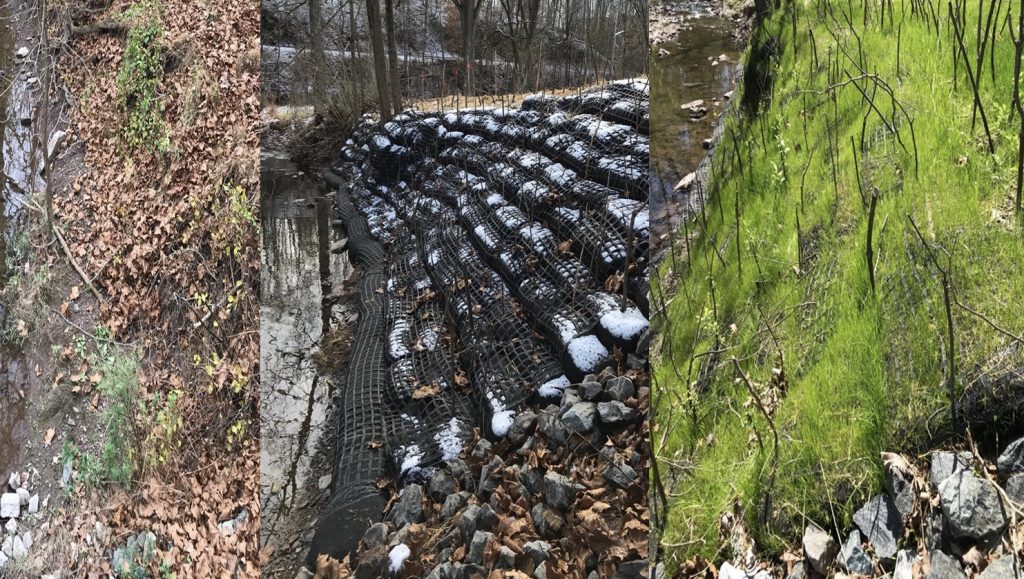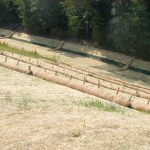Compost Filter Sock Uses and Applications
Compost filter socks are woven mesh tubes designed to contain organic composts and shavings. Considered a best management practice (BMP) product for several industries, the compost filter sock can be used in a range of sediment control, stabilization, and reinforcement applications.
How They Work
As runoff water passes through a compost filter sock, a biofiltration process occurs which collects sediment and other pollutants from stormwater runoff. It is an environmentally friendly product filled with compost that can be installed permanently without any risk to the environment. They support vegetative growth through organic compost materials, which provides extra stability for erosion control.

- Perimeter Control
Compost filter socks are excellent for defining the boundaries on a worksite and preventing any contaminated sediment from seeping into surrounding areas. This is a legal requirement for nearly all construction sites where clearing, grading, excavation, or fill activities occur.
- Storm Drains
The product is also used for inlet protection on storm drains. Rather than allowing contaminated water to flow freely into storm drains, a compost filter sock can be deployed to filter the water while preventing physical debris from entering the drain.
- Check Dams
The compost filter sock can be used as a check dam in ditches, channels, and gullies. They slow stormwater flow, stabilize the soil, and catch debris. For stormwater management, they can redirect runoff from areas you want to be protected and slow down water flow that causes erosion.
- Silt Fences
Compost filter socks can be used as an alternative to a silt fence. They are more easily deployed and provide similar sediment and turbidity control.
- Irrigation Control
They can also be used to capture sediment resulting from sprinkler irrigation systems. This helps prevent the spread of any pesticides used on the plants.
- Bank Stabilization
Compost filter socks can be used as a living bank or slope for reinforcement applications. They allow banks/slopes to withstand higher flow velocities and shear stresses as vegetation grows through the organic material within the filter socks. This creates an additional natural reinforcement system where vegetation reinforces the bank.
- Living Walls
Compost filter socks work as an effective alternative to retaining walls built with concrete or block systems. The vegetative reinforcement and locking systems of the filter socks support soil and erosion protection on steep, even near-vertical slopes.
Benefits
Of course, it’s always important to consider how a product can affect a business’ bottom line. Using compost filter socks has many financial benefits, starting with their relatively low price tag.
- Permanent Installation
Compost filter socks are biocompatible and can be installed permanently in many applications. This means there’s no need to pay for the labor of uninstallation and disposal costs.
- Simple Deployment
Labor is also reduced by the fact that no trenching is required during compost filter sock installation.
- Superior Filtration
The compost filter sock puts stormwater through a bioremediation process where pollutants are trapped within the filter sock and microorganisms filter and remove contaminants.
- Reduced Carbon Footprint
The compost filter sock uses recyclable, biocompatible materials to get the job done. This results in a smaller carbon footprint than other products in the same application.
- Vegetative Reinforcement
The biocompatibility of a compost filter sock allows vegetation to grow through once the socks are deployed. This offers superior reinforcement and looks great aesthetically.
Inspection & Maintenance
A compost filter sock is a great tool, but much of its effectiveness relies on proper installation, placement, and maintenance. Their performance is reduced if the land around the sock is not prepared correctly or if the sock is not firmly in contact with the ground. They should be maintained regularly and inspected at least once a week. You should also inspect compost filter socks within 2 days of rainfall. Any broken materials should be replaced or repaired. Any sediment buildup must be removed once it reaches half the height of the compost filter sock.
Compost Filter Sock Manufacturers
At IWT Cargo-Guard, we offer a variety of sediment control and slope stabilization products that provide the best management practices for sediment control on your work site. Our products are made with high-strength, high-quality materials that withstand the stresses associated with sediment runoff near waterways.
From dewatering bags for silt to coir logs and silt fences, we’ll equip you with the right sediment control products for your project. IWT Cargo Guard’s mission is to provide the most cost-effective products for your project. By quickly analyzing the products and services required for the project, we become an extension of your estimating department.
For compost filter socks, IWT Cargo-Guard has teamed up with leading industry manufacturers including, but not limited to, Filtrexx and Diamond Sock, bringing you the most cost-effective options for your job site.







